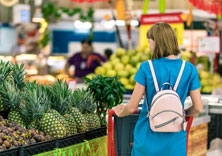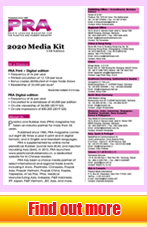PRA Chinese
Rubber Journal Asia Injection Moulding Asia Energy, Oil & Gas Asia
VISIT OUR OTHER SITES:
PRA Chinese
Rubber Journal Asia
Injection Moulding Asia
Energy, Oil & Gas Asia
Exploring the issues of switching to plastic alternatives in packaging

The appealon zero plastic, especially for consumer goods packaging is accelerating although slowly, according to a report produced by the UK-based Green Alliance Circular Economy Task Force (CETF) comprising of members including Kingfisher, Viridor, Walgreens Boots Alliance, SUEZ recycling and recovery UK, and Veolia.
The pressure is weighing down on companies in the retail and in the manufacturing segments, and this is due to the increasing demand to ditch plastics, if not significantly minimise their use amid the flurry of plastic pollution congesting the environment.
The report, authored by Green Alliance’s Senior Policy Adviser, Libby Peake, says that companies, particularly in the grocery sector, that use plastic packaging “ are now under great scrutiny, and often public pressure, to stop using the material. “
While companies in this sector, specifically, are starting if not already implementing ways to use substitutes for plastics in their packaging, “these decisions are driven by consumers’ attitudes towards plastics and corporate strategies combined with a desire to be seen to be acting quickly on concerns about plastic,” the report added.
However, these decisions are often made “without considering the environmental impact of the substitute materials chosen, or whether or not there is adequate collection and treatment infrastructure in place for them, “the report said.
An example stated, quoting a supermarket representative, that customers would suggest replacing plastics (in the soft drink section) with other packaging types like glass or the six-layered carton packaging type (popularised by a Swiss packaging company, TetraPak). However, the interviewee lamented that such packaging types are not recyclable in their area.
On the other hand, other plastic alternatives may not exactly be more eco-friendly in that the carbon footprint in sourcing the raw materials and in producing them could be greater than producing conventional plastic materials, as well as biodegradability is either not assured or that they can still leave residues in the environment (thus, becoming microplastics).
One option that is considered by the retail and manufacturing sectors is incorporating more recyclable content into the product/packaging as well as increasing their recyclability.
“. The speed this can happen is currently constrained by problems with the supply of adequate amounts of recycled material, “the report said, citing also of an opinion by a respondent that “the lack of sources of recycled content [which] causes a bottleneck and therefore drives the price up significantly.”
Carbon footprint of paper bags
The use of single-use plastic for products such as fresh produce, frozen foods, ready meals and the like is also urged to be discontinued and to be replaced with single-use paper or other biobased or compostable materials. According to an audit by Greenpeace International a number of multinational companies are switching to more environmentally friendly materials. About eight UK supermarkets, including Morrisons, Tesco and Sainsbury’s have abandoned plastic packaging to use paper bags for loose produce and bakery items.
The report however claims that paper bags can have “much higher carbon impacts, though this can depend on material sources and product specification”, citing a 2011 study for the Northern Ireland Assembly, which found that “paper bags generally require four times as much energy to manufacture as plastic bags”. The report also cites another study from Denmark that paper bags, if they are reused as bin liners, they do not perform as well on other indicators. “When factors like ozone depletion, human and ecosystem toxicity and water and air pollution are accounted for, a paper bag would need to be reused 43 times to have a lower impact than the average plastic bag, “, according to the Danish study.
Vague perception on environmentally friendly materials in packaging
Respondents to the UK report, meanwhile, are observed to be unclear about what biobased, compostable and biodegradable mean.
Commonly, consumers perceive plant based compostables as most environmentally friendly among other packaging materials, including paper, glass, cardboard, conventional plastic and aluminium, according to a 2019 grocer survey of more than 1,000 individuals.
Cost in replacing conventional plastics with alternatives, as well as the suitability of the material is presenting drawbacks, according to some retailers and brands. Moreover, the lack of public understanding on biodegradables “could result in the mismanagement of used packaging”, one respondent also opined. A business suggested: “We need to work together as a waste value chain to decide what we do with compostable packaging, where we should use it and how we should mark it so that it can be identified readily.”
Taking baby steps while seeing the bigger picture
There is, however, other ways some businesses and retailers are implementing to push the “environmentally friendly” approach to use less plastics, such as offering refill and reusable containers options. Some stores are also encouraging customers to bring their own containers. The report however noted that, specifically for the in-store refill model, respondents expressed concern. “Part of the concern with the in-store refill model is the reduction in shelf life for some products, with one noting that some fresh drinks would last just two days if poured into a customer’s own bottle, compared to 20 to 30 days in a factory sealed container, “ the report stated, adding that many respondents suggest exploring other refill options, which might be better, for certain products.
Among the suggestions included, “a deposit return scheme designed around returning and refilling bottles, rather than recycling”; and “a home delivery, such as the Loop system, whereby used containers are picked up when new products are dropped off. The empty bottles are then cleaned and reused by the supplier”.
At the end of the day, there are important issues that need to be addressed when implementing systems that use less to zero plastics for packaging. “Limiting losses, breakages and emissions from transport, will be vital to ensuring any such systems are environmentally beneficial, “are some factors, which the report stresses.
In effect, tackling the issue of plastic pollution by using fewer plastics or their alternatives in packaging requires concerted effort from all stakeholders. The report infers the overall sentiment of the businesses it interviewed: “The government, and society as a whole, should not only be thinking about tackling plastic pollution when considering appropriate interventions, but also about other materials and their impacts, not least around climate change”.
(PRA)
Subscribe to Get the Latest Updates from PRA Please click here
©2020 Plastics and Rubber Asia. All rights reserved.

©2020 Plastics and Rubber Asia. All rights reserved.
Home Terms & Conditions Privacy Policy Webmail Site Map About Us











































































